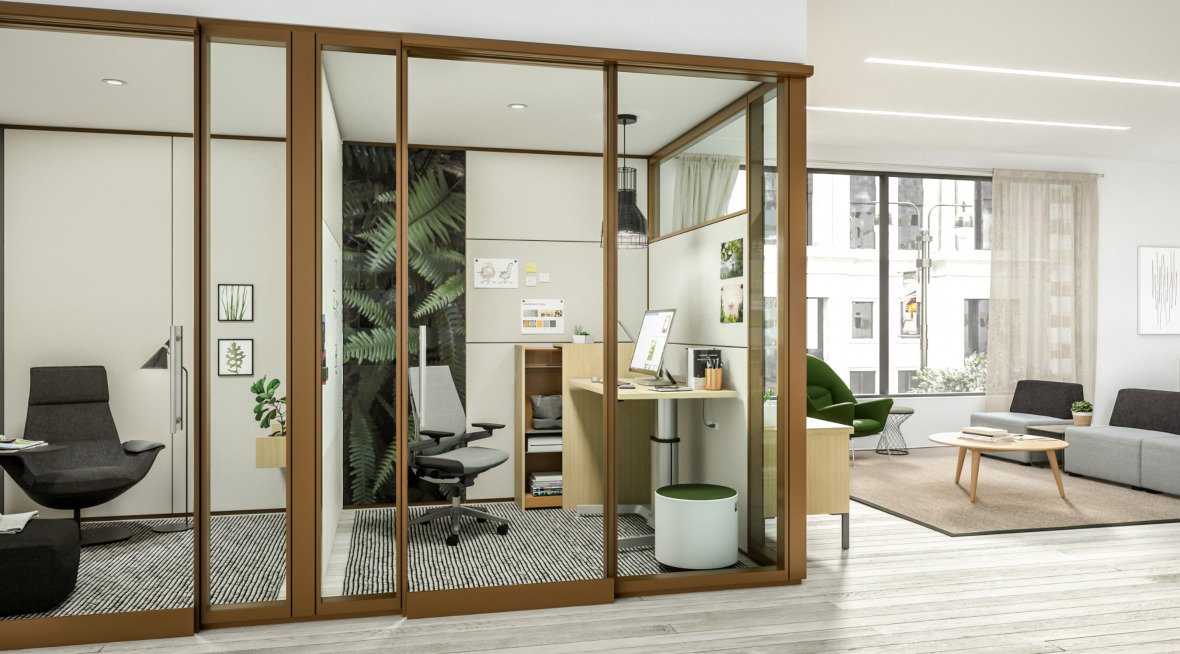We use cookies to maximize your online experience with us. By closing this window, you consent to our cookie policy. You can change your cookie settings in your browser any time. For more information, please see our Privacy Policy located on the footer of this site.
Faculty Spaces are Next in Line for an Evolution

Today’s knowledge economy and the redefined skills needed of tomorrow’s workforce requires a shift towards a 21st century learning model where education spaces support active learning. Likewise, faculty work is evolving to include different responsibilities, pedagogies, and tools. However, faculty workspaces have been a low priority and largely ignored until now.
Leading institutions realize it’s time to focus on spaces that allow their faculty to perform their work and nurture meaningful relationships with their students. These institutions are looking for a balance and to develop spaces that are as high-performing as the people who work within them.
Current State of the Faculty Office
Basic form and function of faculty spaces have remained the same for as long as most of us can remember. Typically ranging between of the overall space at an institution, the faculty office is a private space that allows professors to focus on research and advise students. While organizations become more effective with space optimization, the overall space devoted to offices has increased more than any other space on campus. Strangely enough, these offices are considered some of the most underutilized spaces on campus.
Inhibited Collaboration
An increasing number of faculty members are coming to campus only when they need to teach or hold office hours. Technology advancements allow educators to complete classwork from anywhere and no longer tether faculty to a physical location to reference research tools like bulky desktop computers or books.
For the most part, offices have been designed to meet the faculty demands for space and privacy. Typically furnished with basic features like a desk and limited storage, most offices are not conducive to collaboration with peers. Depending on the age of the facility and available space, it’s not uncommon to find faculty offices for the same department scattered away from each other. The lack of opportunity to connect with each other deters casual interaction and fails to facilitate the creation of collective intelligence, which can be significant in the success of an institution.
Limited Faculty/Student Interaction
Critical to the success of students are faculty-student interactions. However, even scheduled office hours are no longer the pathway to student engagement. Just over half of connect with advisees during scheduled office hours and only about 36% report engaging with students through informal meetings outside the office. it’s no surprise that almost 80% of faculty state they most commonly interact with students via email.
At a time when colleges are aggressively working to keep students engaged, it’s paramount that educators get to know their students outside of the classroom. This interaction not only improves motivation, it encourages them to think about their own values and future plans. Unfortunately, students don’t often take advantage of office hours. Whether it’s due to inconvenient availability, finding it unnecessary, or even feeling intimidated, office hours are a student benefit that need to become more effective and attended on a regular basis.
Developing a high-performing faculty space
Based on a human-centered design research process, Steelcase observed common characteristics of how faculty members worked within their spaces. These five insights demonstrate that, much like today’s office environment, faculty spaces must be flexible and specifically designed to support:
-
A range of thinking modes
To be productive and creative, faculty spaces need to support the full range of thinking modes they engage in, from concentration and rejuvenation to creativity and collaboration.
-
Different work activities and styles that vary by individual and department
Once a straightforward profession, faculty now include a widening hierarchy of researchers, tenured professors, adjunct positions, emeritus faculty, and graduate students who not only do different work according to their level and specialization, but also have their own preferences regarding how they perform work.
-
Comfortable student interactions
Faculty/student interactions can have a positive influence on both parties by boosting cognitive growth, development, and retention. Students who have close, positive, and supportive relationships with their instructors are also more likely to attain higher levels of achievement.
-
Facilitation of creating and sharing knowledge
Work spaces should nurture the sharing and transferring of knowledge between peers, students, and departments for the benefit of each other and the institution. Collaborating in a range of faculty work spaces helps foster the growth of collective intelligence and a sense of community within the organization.
-
Expression of identity and personality
Faculty view their work space as an opportunity to express their identity to collaborators and peers. Personal items like photographs, awards, and memorabilia create a personalized space that illustrates who they are. Psychologically, faculty often see their private space as a status symbol, something they earned, or a way to stay connected after retirement.
Changing Work Requires an Evolution of Space
Essentially, faculty spaces are highly specialized workplaces that need to support a range of focused thinking modes and work styles. By developing thoughtful environments that are designed as a holistic, integrated system, institutions can give faculty members the space they need to effectively perform their work while cultivating meaningful relationships with students and peers.
View the Faculty Spaces Ideabook from Steelcase to learn more about the changing reality of faculty work and see some inspiring design ideas that could help you create a successful faculty work environment.
